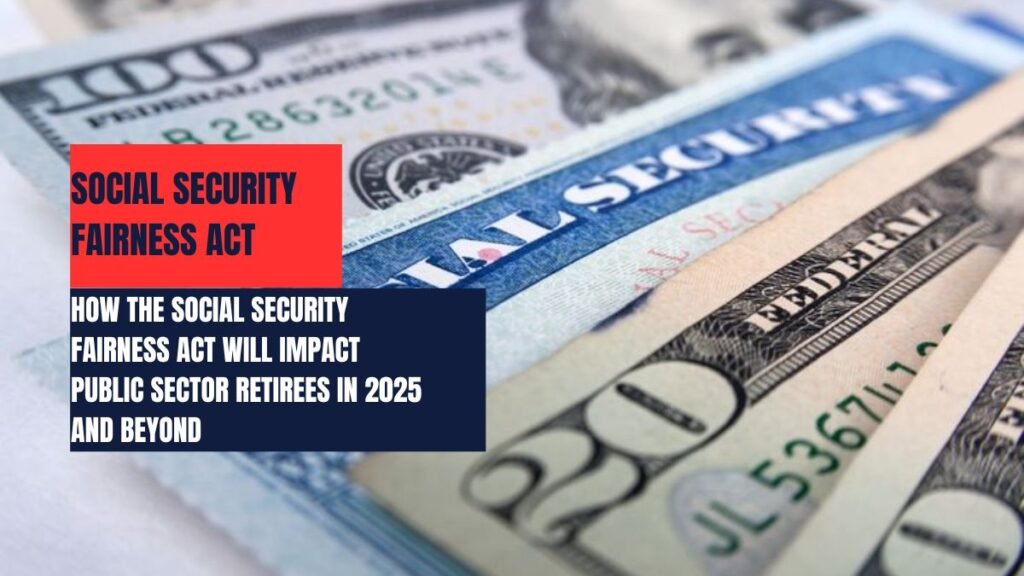The Social Security Fairness Act (SSFA) was signed into law in December 2024 and aims to bring significant changes for certain retirees. Many retirees are eagerly awaiting retroactive payments and monthly increases, but there are still a lot of details that need to be finalized, including the timeline for these payments. Here’s what you need to know about this new law and its impact on public sector retirees and their families.
1. What is the Social Security Fairness Act (SSFA)?
The Social Security Fairness Act, or SSFA, was signed into law by President Joe Biden on December 21, 2024. This law removes two provisions that affected Social Security benefits for some public sector employees and their families: the Government Pension Offset (GPO) and the Windfall Elimination Provision (WEP).
- The GPO was created in 1977 and aimed to reduce benefits paid to a spouse or surviving spouse who collected Social Security based on their partner’s non-Social Security-covered pension.
- The WEP, introduced in 1983, reduced Social Security benefits for individuals who received government pensions but didn’t contribute to Social Security. The WEP was meant to fix a glitch in the benefits system that unfairly increased Social Security payouts for some government employees who only worked a few years in Social Security-covered jobs.
The SSFA repeals these two provisions, meaning that retirees in the public sector and their spouses can now receive the full Social Security benefits without these reductions. The law will be applied retroactively to payments made after December 2023, with monthly increases starting in 2025.
2. Who is Eligible for Retroactive Payments and Monthly Increases?
Not every retiree will be eligible for these benefits. The Social Security Fairness Act applies to retirees who, along with their spouses or surviving spouses, received pension benefits based on work that wasn’t covered by Social Security. If you are part of this group, you could see an increase in your monthly Social Security payments.
- Public sector workers who paid into Social Security (about 72% of state and local workers) will not be affected by the SSFA. They will continue to receive Social Security benefits as before, without any increase due to the law.
- An estimated 2.1 million retirees and 770,000 spouses or surviving spouses are expected to see a boost in their benefits because of the SSFA, according to the Congressional Budget Office (CBO).
If you are not sure whether you qualify, it’s best to check with the Social Security Administration (SSA).
3. How Much Will the Retroactive Payments Be? How Much Will Monthly Benefits Increase By?
This is the key question for many retirees. The CBO has provided estimated figures on how much public sector retirees can expect:
- Public sector retirees can expect an average increase of $360 per month by December 2025. By 2033, this will increase to around $460 per month.
- Spouses of retirees will see smaller increases, averaging around $700 per month by 2025, with growth to $860 per month by 2033.
- Surviving spouses are projected to receive the highest increase, starting at $1,190 per month in 2025 and growing to $1,520 by 2033.
These figures are averages, and individual increases may vary based on factors like how long someone worked, their pension amount, and when they retired.
4. How Far Back Will SSFA Relief Be Applied to Retiree Benefits?
The SSFA will be applied retroactively to benefits paid after December 2023. This means any benefits from 2024 and onward will be recalculated without the WEP and GPO reductions.
If you are a retiree or a surviving spouse, you should expect to receive a retroactive payment to cover any underpayments from 2024. The SSA is still working out the details, so it may take time before these adjustments appear.
5. When Will You See Your Social Security Benefit Increase Due to the SSFA?
Although the SSA has not yet provided an exact date, they are working on implementing the SSFA changes without disrupting the service to the public. The new monthly benefit increases and retroactive payments will likely start after the 2024 recalculation. Retirees can expect these updates to be reflected in their 2025 payments.
In the meantime, it’s a good idea to keep checking the SSFA webpage on the SSA website for updates, as they will provide important information about when these changes will take place.
6. What Should You Do Now That the Social Security Fairness Act is Law?
If you are a retired public sector worker or a spouse of one, you may need to apply for benefits if you have not done so already. The process varies depending on your situation:
- If you are a current retiree who hasn’t filed for Social Security benefits, you may need to submit an application.
- If you have already applied and receive Social Security, you don’t need to do anything. The SSA will automatically apply the SSFA to your benefits.
For those who are applying for surviving spouse benefits, the process is different. You will need to call the SSA at 1-800-772-1213 to begin your application.
The Social Security Fairness Act is a major change that will help many public sector retirees and their families get the full Social Security benefits they deserve. If you’re affected by this new law, be sure to check your eligibility, keep an eye out for updates from the SSA, and make sure all your information is up to date with them. The retroactive payments and benefit increases will take time, but they are coming, and the changes will mean more money for many retirees in the years ahead.
Must Visit:- SLT News

